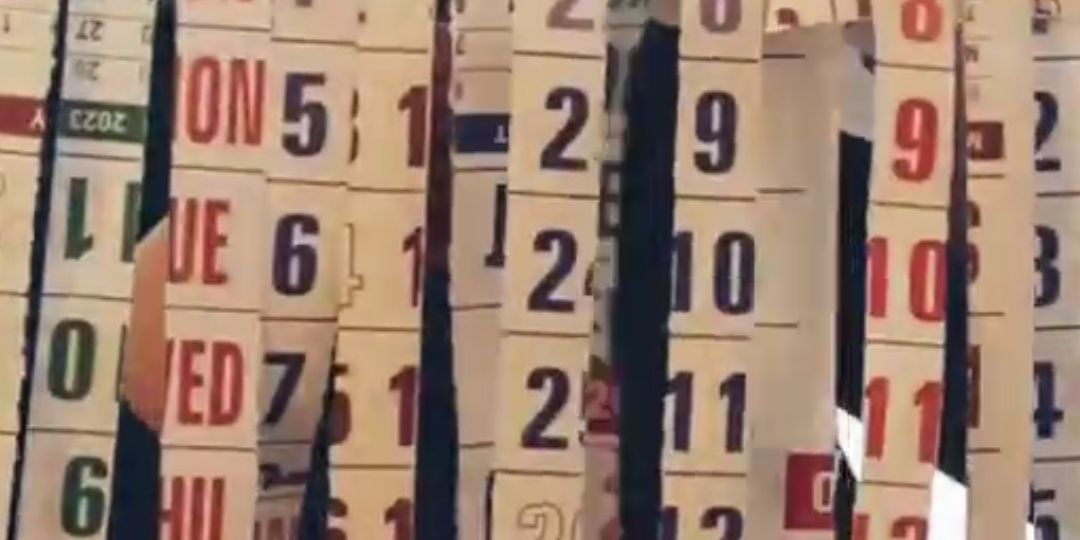
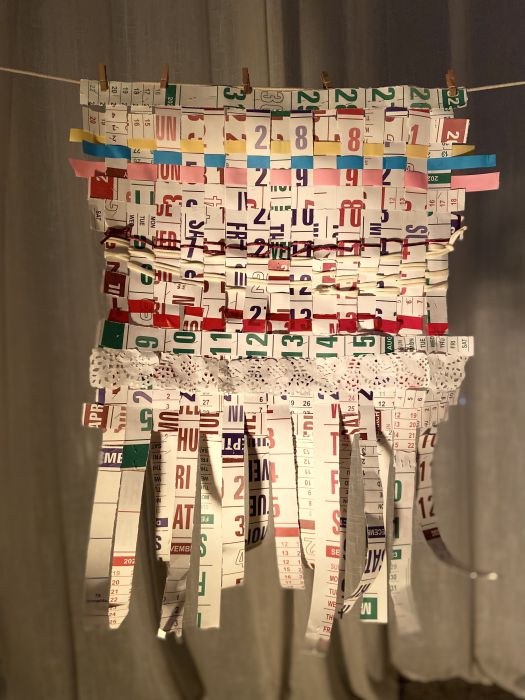
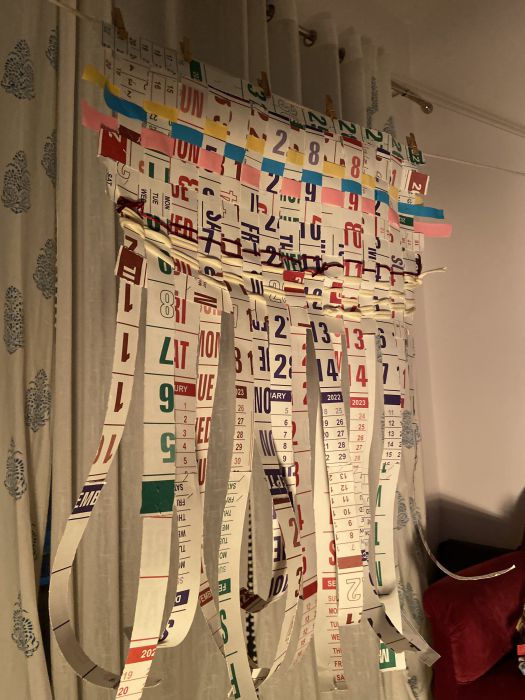
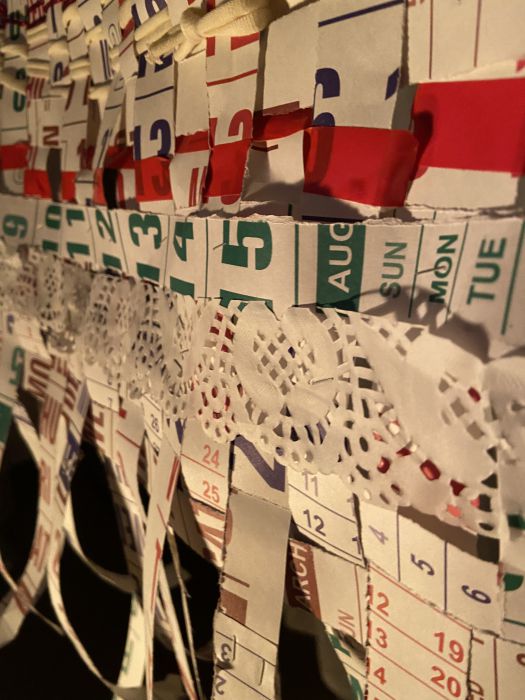
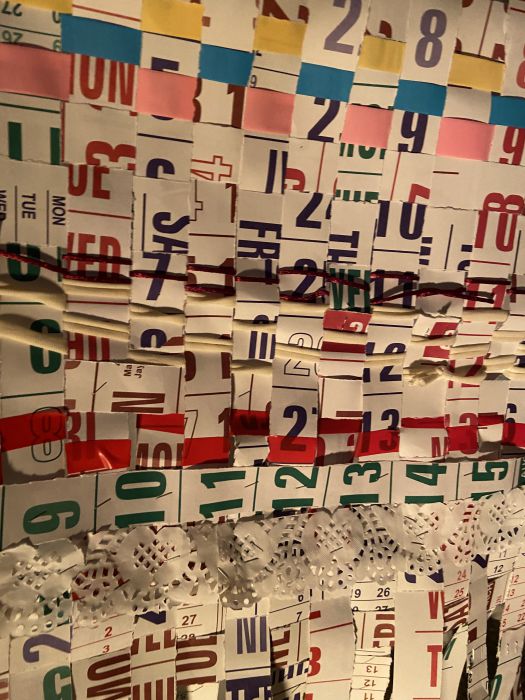
The artwork with its process video titled ‘Unmaking of a Calendar’ is an attempt to challenge the ableist lens through which we observe accessibility to sexuality. It is an exploration of how one could deconstruct the ways in which we look at time while acknowledging the significance of the Crip Time Lens in the accessibility discourse.
From a disabled perspective, sexuality is completely enmeshed with access to time. Placed at different junctures within the disability space and having a complex relationship with their body, a disabled person cannot assess how far they’ve come in their ‘exploration’ of their sexuality through a linear model of time. Experiences are always overlaying, crisscrossing, taking a halt, gliding through or making ruptures to one’s relationship with themselves – and so the linearity is challenged beyond what the ableist world can comprehend.
A few pertinent questions must be asked: why must any awakening be categorised as timely or late? Why must our paces to know ourselves, our bodies, what we like, and what stimulates us, remain devoid of the aspect of ‘agency’ when we’re talking of accessibility? Where is the agency to reconfigure time in relation to our pace of doing things? Where is that agency lost and how do we imagine reclaiming it?
~
Mapping those spaces is really not that hard.
For a few of us, that agency to oneself is lost as soon as a disabled person realises that their needs are mere accommodations for others. That agency is lost within inaccessible spaces, within abled communities, families and gatherings as well as the chair they sit on in a doctor’s clinic. It is lost when their bodies are viewed as distinct body parts, as though a mechanical system that needs repairing. That agency is also lost when years go by and there’s little to no movement in their circumstances, while the rest of the world gets to celebrate these markers of time going forward and forward.
If all the emotional, physical, psychological and social resources available in a disabled person’s life are consumed with fighting battles within themselves, finding safety and love for their body, and advocating for their right to life, as well as their right to love and to be loved, there’s little left to ‘explore’ as the abled say, with our sexuality.
How must then, one steal some time to touch themselves? How must they realise what feels good or what feels repulsive? That sense of pleasurable touch is so fragmented, that reaching a space that feels safe is a time-consuming process, with its own delays and hiccups, as well as stresses within inter-abled relationships resulting in needs remaining unmet and unfulfilled.
As persons living in crip queer reality, where our identities are neither multiplicative nor additive but rather co-created, we’re seen as living tragedies. The very imagination of disabled folks in an erotic framing is missing. Representation is lacking and that lack is contributing to further distance from our own desires.
Against this normative, the Crip Time Lens has a lot to offer. Recognizing it and accepting it is not just an alternative to real-time but a necessary part of time itself. It’s the first step towards normalising intersectional experiences within the sexuality-accessibility discourse. We need to step away from looking at sexuality, sexual identity, sexual exploration or sexual inhibition for that matter as a destination one has to reach or recover from within a stipulated time, and since time itself is a construct that needs re-imagining, finding small ways to counter our internalised ableism through acts of self-care could be starting points to reclaiming the agency that remains lost.
Note: While creating the artwork, I used strips cut out of a wall calendar, paper lace, silk yarn, t-shirt yarn and coloured pieces of tape. The artwork was completely intuitive and I went as I felt like going while I was at it. Initially I had planned to finish it till the end but the vertical ends that are left loose are a representation of journeys I’m yet to take.